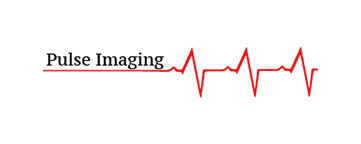Growth Hormone HGH
Human Growth Hormone Test is also known as;
- GH test
- Human growth hormone test
- Somatotropin test
- Growth hormone stimulation test
- Growth hormone suppression test
What is a Human Growth Hormone Test?
The human growth hormone is one of the hormones secreted by the pituitary gland. The pituitary gland is a pea-sized gland located at the base of your brain. It releases multiple hormones, and the Growth hormone is one of them.
Growth hormone, as the name represents, is necessary for the growth of your body. It also controls metabolism, the process by which your body makes and uses energy. The average levels of GH in the blood are essential for normal growth.
Higher or lower levels of GH can result in many health problems, especially in children and adults. If the doctor suspects that your body is producing too high or too little Growth hormone, they will prescribe you a Growth hormone test. Test results can help them make an accurate diagnosis after correlating clinically.
What is the test used for?
A growth hormone test is used to diagnose the growth disorder, including;
GH deficiency disorder: It causes multiple symptoms in children, like:
1) Slow growth
2) Delayed puberty
3) Chubbiness
4) Slow tooth development
5) Increase fat around the stomach and face
6) Sluggish hair growth
7) Shorter height
In adults, it causes low bone density and reduced muscle mass. The other symptoms may vary, including:
- Anxiety/Depression
- Decreased libido
- Dry and thin skin
- Fatigue and tiredness
- Heart problems
- Insulin resistance
- Low energy levels and sensitivity to heat and cold.
Gigantism: This is a childhood disorder where the body produces too much growth hormone. Children with gigantism have large hands and feet and look older than their age. Other symptoms of gigantism include;
- Excessive sweating and sensitivity to heat
- Difficulty with peripheral vision
- Pain in joints and bones
- Delayed puberty
- Enlargement of organs like the heart
- Headache and vertigo
- Apnea
Acromegaly: This disorder affects adults and causes the pituitary gland to produce too many growth hormones. It can lead to;
- Bone thickening instead bone lengthening.
- Skin thickening
- Fatigue and headache
- Joint pain
- Irregular menstrual cycle
- Erectile dysfunction in men
- Enlarged hands, feet, and facial bones
- Carpal tunnel syndrome
- Skin tags and internal polyps.
Why and when do you need the Human Growth Hormone Test?
Your doctor may prescribe you a GH test if your child shows any of these symptoms;
- Slow growth rate as compared to other children of his age
- Shorter height, arms, limbs
- Delayed puberty
- Small penis in males
- Delayed or disturbed menstrual cycle in females
If an adult shows any symptoms like fatigue, decreased bone density, and muscle mass along with the symptoms mentioned above of acromegaly, then one should have this test done.
What kind of sample is required for the test?
A blood sample is needed to run the tests. An IV line is inserted, and blood is drawn at different intervals. The test takes almost 2 to 5 hours to complete. The procedure is done by following steps:
- An IV line is placed either inside of the elbow or the back of your hand. The site is cleaned with an antiseptic, and a sample is drawn.
- The first sample is drawn early in the morning without eating anything.
- Few medications are instilled through the IV cannula to stimulate the pituitary gland to release GH. Many medications are available for this; the laboratory technologist will decide which one is the best according to your BMI.
- Another sample is drawn within the next few hours, and the sample is saved by labeling them.
- After the last sample is drawn, an IV line is removed, and pressure is applied to stop bleeding.
Do you need to prepare for the test?
To give the blood sample for the GH test, you need to fast for 10 to 12 hours before giving the sample. Eating any food can remarkably change the results. If you are on any medication, consult your doctor. He will stop the respective medication that can affect the results.
If a child has to prepare for a test, it is essential to explain how it feels to take a blood sample. You can show him the procedure through animation for his better understanding. Ensure the child is calm and has no needle phobia, so he doesn’t faint. Keep fluids and snacks with you to give to the child after drawing blood.
Prolonged fasting can be challenging for children; preparing them emotionally for the procedure is essential.
Are there any risks to this test?
There is no risk associated with this test. Only when the needle is inserted, you can feel a stinging sensation. Afterward, there can be throbbing pain or bruising on the site of the cannula. It goes away after some time of applying pressure or bandage. People with needle phobia should consult a lab technologist to take preventive measures before inserting the IV line.
What do the test results mean?
The test results have a normal range; values higher or lower than this value show abnormality. Normal results include;
- Normal peak value: 10 ng/mL (10 µg/L)
- Intermediate value: 5 to 10 ng/mL (10 µg/L)
- Subnormal value: 5 ng/mL (5 µg/L)
The average value of GH following the proper protocol of sample withdrawal rules out hGH deficiency. The average values can differ slightly in different laboratories depending on their reagent. Talk to your laboratory technologist about the expected value range.
Related Tests:
- IGF-1 (Insulin-like Growth Factor 1) Test
- IGBP-3 test
Frequently ordered together
Thyroxine Free T4 Free
Testosterone Free
Follicle Stimulating Hormone FSH
Luteinizing Hormone LH
Thyroxine T4 Total
Testosterone Total
Follicle Stimulating Hormone and Luteinizing Hormone-FSH and LH
PROLACTIN
THYROID PANEL WITH TSH (Thyroid Stimulating Hormone)
Sex Hormone Binding Globulin SHBG
IGF Binding Protein-1 (IGFBP-1)
Anti-Mullerian Hormone AMH-Male
Anti-Mullerian Hormone AMH-Female
Thyroid Screening Test
IGF-1 LC/MS
19.00$
36.00$
29.00$
29.00$
17.00$
36.00$
47.00$
29.00$
40.00$
32.00$
56.00$
56.00$
21.00$
132.00$
31.00$














